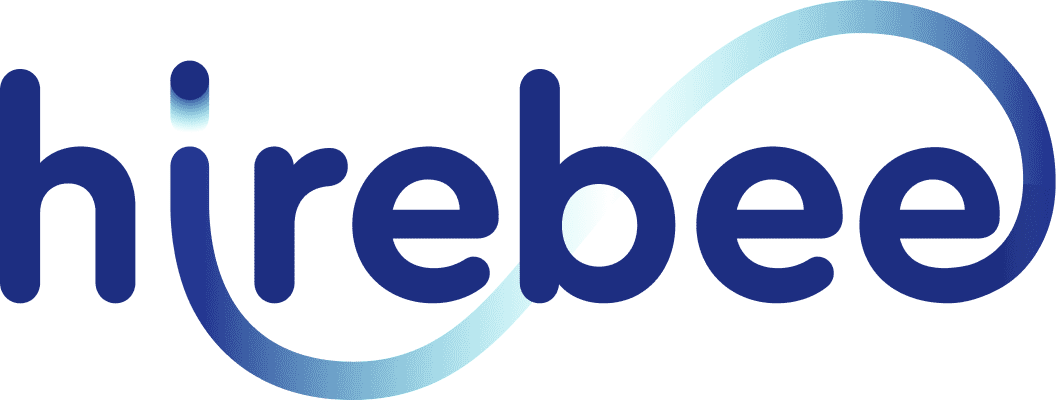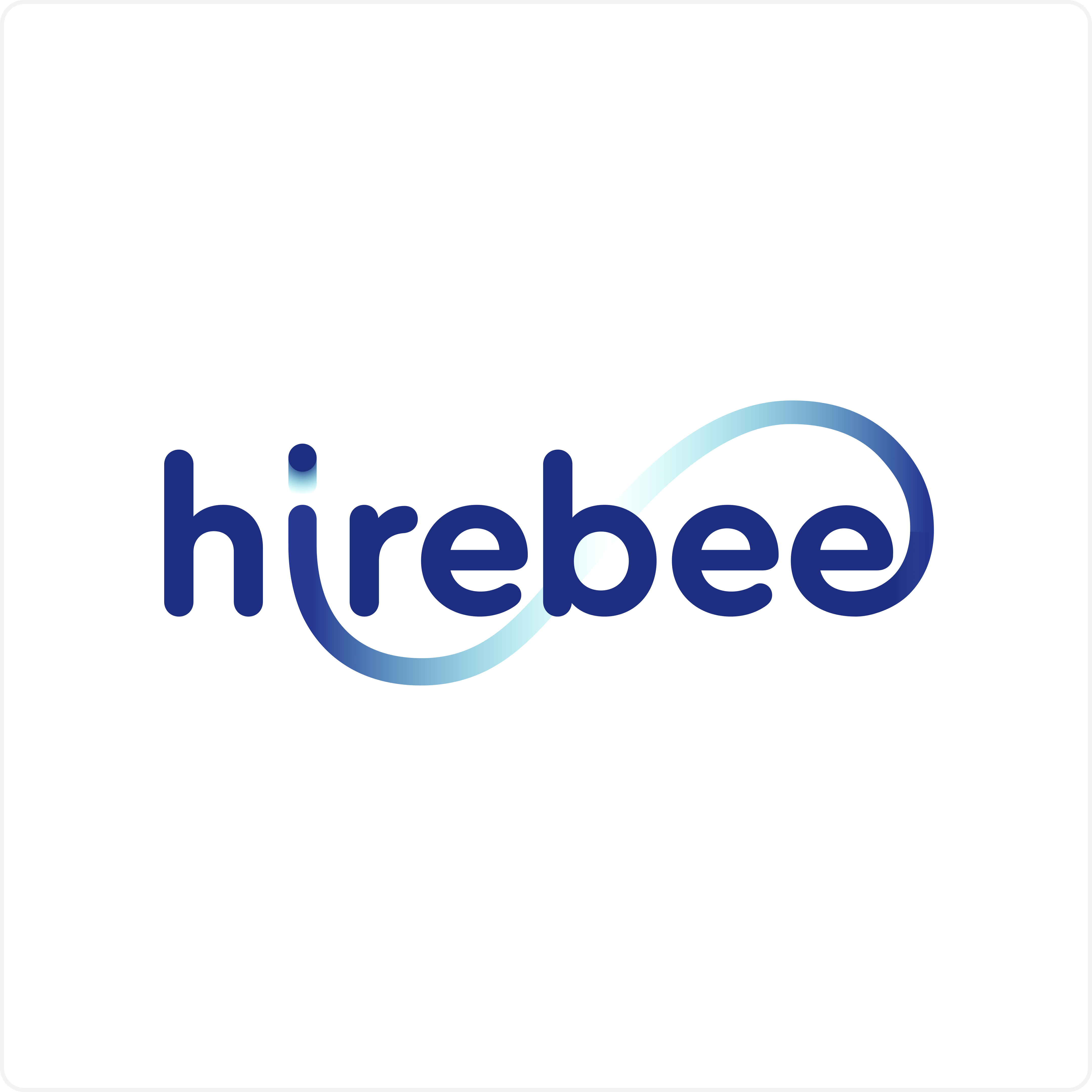For decades, resumes have been the go-to tool for evaluating candidates. Education credentials, job titles, and years of experience have dominated hiring decisions. But as the workplace evolves, driven by technology, shifting workforce expectations, and the rise of remote work, so must our recruitment approach.
Enter skills-based hiring, a method that prioritizes what candidates can actually do over what their resumes say they’ve done. Instead of filtering applicants based on degrees or previous job titles, employers are now assessing real-world capabilities, practical knowledge, and problem-solving abilities. This shift is not only redefining how talent is discovered but also reshaping entire hiring processes.
In 2023, more companies than ever are moving beyond resumes to focus on skills, and for good reason. Skills-based hiring has been linked to more diverse workforces, higher employee retention, faster hiring timelines, and better overall candidate quality.
In this blog, we’ll explore how and why skills-based hiring has grown in popularity, what makes it so impactful, and how it’s helping businesses unlock a broader and more capable talent pool. The future of recruitment is here, and it’s all about what you can do, not just where you’ve been.
Table of Contents
ToggleThe Rise of Skills-Based Hiring
The shift toward skills-based hiring didn’t happen overnight. It’s the result of several converging forces that have pushed employers to rethink how they evaluate talent. Over the past few years, companies have faced a perfect storm: global talent shortages, the explosion of remote and hybrid work, and a rapidly changing skills landscape fueled by digital transformation and automation.
Talent shortages have become one of the most pressing challenges in recruitment. According to a 2023 report from ManpowerGroup, 77% of employers globally report difficulty finding the skilled talent they need, the highest level in 17 years. Traditional hiring filters, like degrees and years of experience, often eliminate capable candidates who have the right skills but don’t check all the conventional boxes.
Meanwhile, the COVID-19 pandemic accelerated the adoption of remote work, forcing organizations to hire based on outcomes rather than location or pedigree. This change encouraged employers to look beyond borders and resumes, assessing talent based on flexibility, adaptability, and job-specific abilities.
Additionally, AI-powered tools and skill assessments have made it easier than ever to evaluate candidates based on what truly matters: their skills. Platforms like LinkedIn and Coursera now enable users to showcase verified skills on their profiles, and applicant tracking systems (ATS) are increasingly equipped to parse and prioritize skill data over keywords or past job titles.
In 2023, skills-first hiring has moved from trend to strategy. According to LinkedIn’s “Future of Recruiting 2023” report, 75% of recruiting professionals say that skills-based hiring will be a priority for their company in the next 18 months. LinkedIn has even introduced tools like the Skills Graph to help recruiters connect with talent based on skills, not resumes.
A Deloitte study echoed this momentum, emphasizing that skills-based organizations are 63% more likely to achieve results in areas like innovation and agility. Companies that pivot to a skills-first model see not only hiring improvements but also better employee engagement and mobility.
Some of the world’s most influential organizations have already embraced the skills-first approach:
- IBM removed degree requirements from more than half of its U.S. job postings, focusing instead on “new collar” skills and practical certifications.
- Google offers its own career certificates through Grow with Google, stating openly that these can be more relevant than a college degree.
- Accenture is committed to expanding its talent pipelines by hiring based on demonstrated abilities and using apprenticeship programs to upskill new employees.
Smaller companies and startups are also leveraging this model to compete for top talent, using platforms like Hirebee, which offers built-in candidate evaluation tools, skills assessments, and customizable workflows to enable smarter, skills-focused hiring at scale.

Why Skills-Based Hiring Matters More Than Ever
As businesses face increasing competition for talent, skills-based hiring has emerged as a powerful strategy to build stronger teams, reduce bias, and tap into a broader range of qualified candidates. Moving beyond resumes and focusing on real capabilities leads to more equitable, efficient, and effective recruitment outcomes. Here’s why this approach is more critical than ever in 2023 and beyond:
A More Diverse Workforce
One of the biggest advantages of skills-based hiring is that it levels the playing field. Traditional hiring practices often favor candidates from prestigious universities, specific socioeconomic backgrounds, or well-known companies. This creates unintentional barriers for talented individuals who may lack formal credentials but possess the exact skills needed for the role.
By evaluating candidates based on competencies rather than credentials, employers reduce bias tied to education, geography, and professional history. This shift enables companies to build a more diverse workforce, bringing in fresh perspectives and fostering a more inclusive culture. Diverse teams are proven to be more innovative, adaptable, and successful—traits that are crucial in today’s fast-evolving business landscape.
A Larger, More Inclusive Talent Pool
In a world where millions of job seekers are self-taught, bootcamp graduates, freelancers, or career changers, traditional hiring methods often miss high-potential candidates. Skills-based hiring allows employers to tap into a much larger and more inclusive talent pool, including individuals who have gained experience outside of formal employment settings.
Whether it’s someone who learned coding through online platforms or a marketing expert who built their portfolio through freelance work, this approach helps companies access talent that would otherwise be overlooked. In times of talent shortages, expanding the talent pool through a skills-first strategy is both a smart and necessary move.
Improved Quality of Hires
Hiring based on resumes alone doesn’t always guarantee the right fit. Many candidates may have impressive credentials but lack the practical skills required for the job. With skills-based hiring, employers use assessments, simulations, and task-based interviews to measure a candidate’s real-world capabilities.
This results in better job fit, improved performance, and reduced turnover. When candidates are evaluated on what they can actually do, the hiring process becomes more objective and predictive of future success. Companies adopting this model often report higher employee engagement and retention, because hires feel more confident and competent from day one.
Business Benefits of Skills-Based Hiring
Beyond the talent-related advantages, skills-based hiring delivers measurable business outcomes. From reducing costs to improving retention and accelerating hiring timelines, companies adopting this approach are seeing tangible returns on investment. Here’s how a skills-first model benefits the bottom line:
Accelerated Time to Hire
Traditional hiring often involves reviewing hundreds of resumes, many of which fail to reflect a candidate’s true potential. Skills-based hiring streamlines this process by using automated skill assessments, structured interviews, and role-specific tasks to identify qualified candidates faster.
By filtering applicants based on verified competencies rather than outdated resume keywords, hiring managers can quickly identify top talent and reduce time spent on irrelevant screening. This leads to shorter time-to-fill metrics, helping businesses stay agile and responsive in competitive markets.
Reduced Hiring Costs
Hiring the wrong person is expensive, not just in terms of salary, but also lost productivity, training expenses, and turnover. By prioritizing real abilities over assumptions based on job history, skills-based hiring significantly improves hiring precision, reducing the chances of costly mismatches.
Additionally, with less reliance on traditional sourcing channels or third-party recruiters, companies can lower recruitment marketing and agency costs. Many modern hiring platforms now offer integrated skill evaluation tools, cutting down the need for extra screening services.

Improved Employee Retention
When employees are hired for roles that match their strengths, they’re more likely to feel confident, motivated, and engaged from the start. Skills-based hiring fosters this alignment by focusing on job-role compatibility and performance potential rather than superficial resume credentials.
As a result, organizations that use skills-first approaches see higher retention rates and improved employee satisfaction. This also opens the door for internal mobility, allowing employees to upskill and transition into new roles based on evolving business needs. Reduced Hiring Costs
Skills Over Pedigree: A Cultural Shift
The adoption of skills-based hiring is more than a change in recruitment tactics—it represents a deeper cultural transformation within the workplace. This shift is gradually redefining how organizations assess potential, develop talent, and foster inclusivity. By placing real-world ability above academic pedigree or past job titles, companies are building a more agile and forward-thinking workforce.
For decades, degrees from prestigious institutions and previous job titles were the gold standard for evaluating candidates. These markers, while helpful in some cases, often excluded individuals with non-traditional backgrounds—people who gained their expertise through self-teaching, bootcamps, vocational training, or on-the-job experience.
Skills-based hiring challenges that norm by placing value on practical, demonstrable ability. This opens the door to candidates who may have been overlooked simply because they don’t fit a conventional resume format. It also helps hiring managers focus on whether someone can actually do the job, not just talk about it.
One of the most significant effects of this shift is how it’s changing internal workforce strategies. Organizations are starting to view their employees as evolving assets rather than static roles. This means recognizing that someone who lacks a specific credential today could still grow into a future leadership role if given the right support and opportunities.
To enable this, many companies are investing in upskilling and reskilling programs. Employees are encouraged to build new competencies aligned with business goals—whether through formal courses, mentorship, or hands-on project experience. Internal mobility becomes not just possible, but expected. People can move laterally into new departments or step up into more senior roles based on demonstrated skills rather than waiting for a certain number of years or titles.
Digital platforms are accelerating this transformation by making it easier for both employers and candidates to focus on skills. Tools like Hirebee, LinkedIn Skills Match, and learning management systems help identify skill gaps, match individuals to suitable roles, and provide pathways for learning and growth.
For employers, this means better tools to screen, assess, and track talent based on performance and ability. For candidates, it provides more transparency around what skills are actually needed and how to acquire them. The recruitment process becomes more dynamic, data-driven, and personalized.
In many ways, this cultural shift is about creating a workplace where people are seen for their true potential, not just their past. As companies continue to face evolving challenges and talent shortages, embracing a skills-first mindset isn’t just progressive, it’s essential.

Implementing Skills-Based Hiring in Your Organization
Shifting to a skills-based hiring model may seem like a big transition, but it can be rolled out in manageable, strategic steps. Whether you’re a small company looking to expand your team or a large organization aiming to future-proof your workforce, adopting this approach can unlock access to more qualified, diverse, and engaged talent. Here’s how to start:
Step 1: Redefine Your Job Descriptions
The foundation of skills-based hiring lies in how you define the role. Traditional job descriptions often list degree requirements or years of experience as a proxy for ability. A skills-first description, on the other hand, clearly outlines:
- The essential skills required to perform the job
- Expected outcomes or deliverables
- Tools and technologies the candidate should be comfortable with
- Behaviors or traits that indicate a strong fit (e.g., problem-solving, communication, adaptability)
By being precise about what success looks like in the role, you can attract a wider range of capable candidates, many of whom may have been overlooked under a resume-driven approach.
Step 2: Use Skill Assessments Early in the Process
Instead of relying solely on resumes or cover letters, incorporate practical assessments that allow candidates to demonstrate their ability. These might include:
- Technical challenges or coding tasks
- Case studies relevant to your industry
- Simulated work tasks (e.g., writing a product pitch, analyzing a data set)
- Situational judgment tests
This step levels the playing field and gives you an objective way to compare candidates’ actual capabilities.
Step 3: Structure Interviews Around Skills
Unstructured interviews can introduce bias and inconsistency. Move toward a more structured format that focuses on the key skills needed for the job. Some best practices include:
- Creating a skills scorecard for interviewers to use
- Asking competency-based or behavioral questions that relate to real scenarios
- Using the same questions for each candidate to ensure fairness
This creates a clearer picture of how someone might perform in the role and helps avoid overvaluing charisma or credentials.
Step 4: Leverage Technology to Scale the Approach
There are many tools available today that can help you integrate skills-based hiring into your workflow:
- Hirebee: Offers skill-based filtering, structured interview templates, and customizable assessments
- LinkedIn Skills Match: Helps identify candidates with relevant skill sets for open roles
- Codility, HackerRank, TestGorilla, and Vervoe: Provide technical and soft skill assessments
- Applicant tracking systems (ATS) that support tagging, scoring, and ranking based on skills
These tools reduce manual effort, increase consistency, and ensure your hiring decisions are rooted in real capability.
Step 5: Get Buy-in Across the Organization
Implementing a skills-first strategy requires more than just HR buy-in. Hiring managers, leadership teams, and even current employees should understand the value and be involved in shaping new processes. Start by:
- Sharing success stories and data from early implementation
- Providing training for teams on skills-first interviewing and evaluation
- Encouraging departments to take ownership of upskilling and career mobility initiatives
The more aligned your teams are, the more effectively this cultural change will take root.
Skills-based hiring isn’t just a way to improve recruitment. It’s a smarter way to build teams that are more adaptable, diverse, and capable of growing with your business. By implementing these steps, you position your organization to attract better-fit talent and create a more inclusive hiring process from day one.
Conclusion
As the landscape of work continues to evolve, so too must the way we hire. Skills-based hiring represents a meaningful shift away from relying solely on resumes, degrees, and job titles, and toward a more practical, inclusive, and forward-thinking approach. By focusing on what candidates can do, rather than where they’ve been, companies are seeing significant benefits: faster and more efficient hiring processes, reduced recruitment costs, better employee retention, and access to a much broader, more diverse talent pool.
This approach also promotes greater equity by giving skilled individuals, regardless of their background, an opportunity to be seen and valued for their capabilities. It helps businesses build teams that are better aligned, more engaged, and prepared to grow with the organization. For HR leaders and recruiters, now is the time to rethink what defines a “qualified” candidate and start designing hiring strategies that reflect the realities of today’s workforce.
Skills-based hiring isn’t just a trend. It’s the future of recruitment, more fair, more effective, and ultimately, more human.









